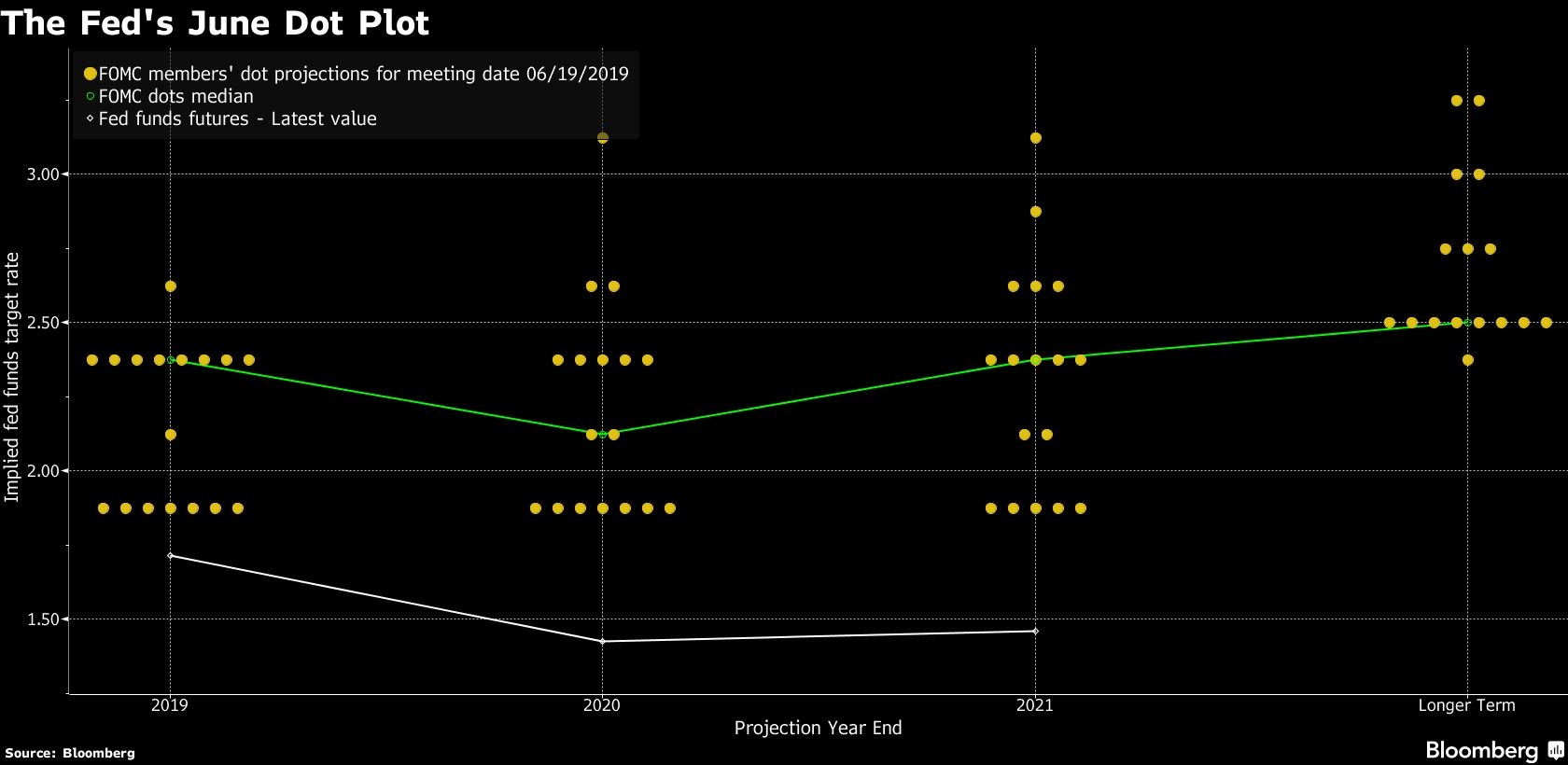Jul 10, 2019
Powell signals rate cut as trade war outweighs strong job market
, Bloomberg News
Powell signals willingness to cut rates
Jerome Powell took the Federal Reserve closer to cutting interest rates this month, citing risks from the trade war with China and saying June’s strong U.S. jobs report hadn’t shifted the outlook.
Since Fed officials opened the door to lower rates at their June meeting, “uncertainties around trade tensions and concerns about the strength of the global economy continue to weigh” on the U.S. outlook, the central bank chief told Congress at a hearing on Wednesday.
Asked if that month’s report of stronger-than-expected hiring in the U.S. had changed the Fed’s thinking, Powell said: “A straight answer to your question is, no.”
Traders reacted to Powell’s semi-annual testimony by cementing bets on a rate cut at the Fed’s next meeting July 30-31. U.S. stocks advanced, pushing the S&P 500 index past 3,000 for the first time, and Treasuries rose with gold.
Under mounting pressure from President Donald Trump to loosen monetary policy, Powell embraced the central bank’s mandates for maximum employment and stable prices as well as its “independence,” noting that it comes with a need for transparency and accountability.
Powell carefully explained the reasons why the policy committee has shifted its views this year, and noted that “crosscurrents have reemerged, creating greater uncertainty.” Despite a current trade war truce with China, he continued to stress downside risks to the outlook.
“Uncertainties about the outlook have increased in recent months,” Powell said in the text of his remarks. “Economic momentum appears to have slowed in some major foreign economies, and that weakness could affect the U.S. economy. Moreover, a number of government policy issues have yet to be resolved, including trade developments, the federal debt ceiling, and Brexit.”
He noted that policy makers are carefully monitoring developments including the risk that weak readings on inflation could be “even more persistent than we currently anticipate.”
In addition, Powell pointed to a slowdown in business investment, decelerating global growth, and declines in housing investment and manufacturing output.
“It strongly suggests they’re going to be inclined to ease at the meeting later this month,” Michael Feroli, chief U.S. economist at JPMorgan Chase & Co., said in a Bloomberg Television interview. “He continued to highlight the uncertainties that are weighing on the outlook rather than highlighting the better jobs report.”
The statement released after the last meeting also cited rising “uncertainties” and “muted” inflation in its shift toward a rate-cutting bias last month. Recent U.S. economic data have been mixed, but analysts cite a variety of indicators the Fed could point to supporting a cut. A gross domestic product tracking indicator from the Atlanta Fed suggests second quarter economic growth slowed significantly.

What Our Economists Say
Powell chose not to reshape market expectations, which were leaning heavily toward a July cut of 25 bps, further illustrating that the Fed is not willing to fight market sentiment following the clumsy execution of its final rate hike in the fourth quarter of last year.
--Carl Riccadonna, Yelena Shulyatyeva and Eliza Winger (Bloomberg Economics)
Powell noted that while the labor market remains healthy, gains have been uneven for many Americans, citing unemployment rates for African Americans and Hispanics that remain well above the rates for whites and Asians. Income inequality has become a rallying cry for Democratic candidates as the 2020 presidential race kicks off.
The Fed chief gave lawmakers a list of troubling economic issues that would be better solved by fiscal policy rather than by the central bank. Finding ways to boost productivity “should remain a high national priority,” he said.
Trump Attacks
Powell is testifying before the House, and again before the Senate on Thursday, as Trump has relentlessly attacked him.
“Blew it!” Trump tweeted June 24 after the Fed left rates on hold the week before, comparing it to “a stubborn child.” If the Fed “knew what it was doing” it would cut rates, the president toldreporters Sunday.
Trump announced his intentions to nominate two potentially dovish members to the Fed last week, either of whom might be a Fed chair pick for Trump when Powell’s term ends in 2022, assuming the president wins reelection next year.
One is Christopher Waller, research director at the St. Louis Fed. Trump’s other pick is Judy Shelton, who has a record as a hard money advocate but tweeted after the announcement that she “will strive to support the U.S. pro-growth economic agenda with the appropriate monetary policy.”
--With assistance from Reade Pickert, Sophie Caronello and Christopher Condon.
